What are some of the most beautiful Asian trees?
The answer to this question depends on who you ask. Some would say the Japanese maple while others would say the cherry blossom tree. Others might point out the banyan tree or the durian fruit tree.
No matter what type of tree you prefer, they all share certain characteristics. They are often large, majestic, and full of character. And they’re also very useful.

Today, we are going to take a deeper look at the trees found in Asia. Asian trees are beautiful, elegant, and graceful. They are so popular they can be found in parks and gardens all around the world.
Here we will look at their unique characteristics as well as any important uses they may have.
If you love all things plant-related or simply want to learn more about what you might see in Asia, be sure to check out our list!
1. Cherry Blossom Tree

We start our list with arguably the most famous tree found across Asia, but primarily in Japan. This native tree brings wonderful shades of billowing pink or white blooms in the spring.
These blooms typically last just two weeks, making them a symbol of renewal and the short nature of life. A sight to behold at the foot of Mt Fuji, the cherry blossom tree can range in sizes from 2-10 m.
2. Flame Trees
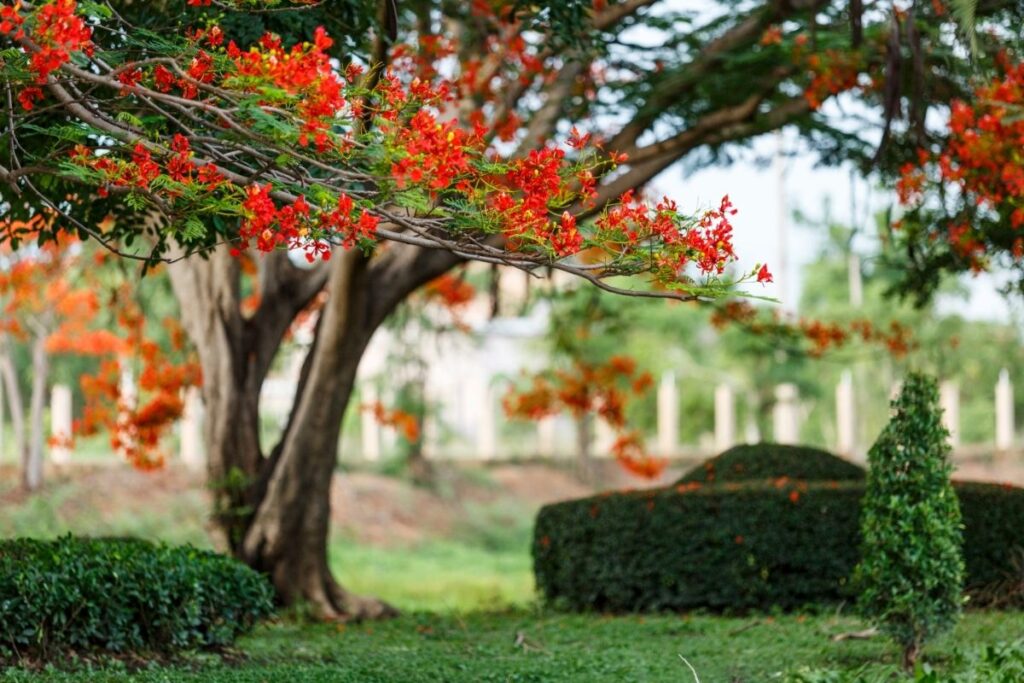
Easily grown, different varieties of flamboyant flame trees can be found all over Asia, from Vietnam and Thailand to Bangladesh and the Philippines.
Part of the legume family, this tropical tree has beautiful fern-like leaves and simply stunning fiery red and golden flowers that bloom in large clusters between the spring and summer months.
Reaching heights of 50 feet, flame trees are usually seen as excellent ornamental trees, but they do also have medicinal properties used to treat diabetes.
3. Japanese Wisteria
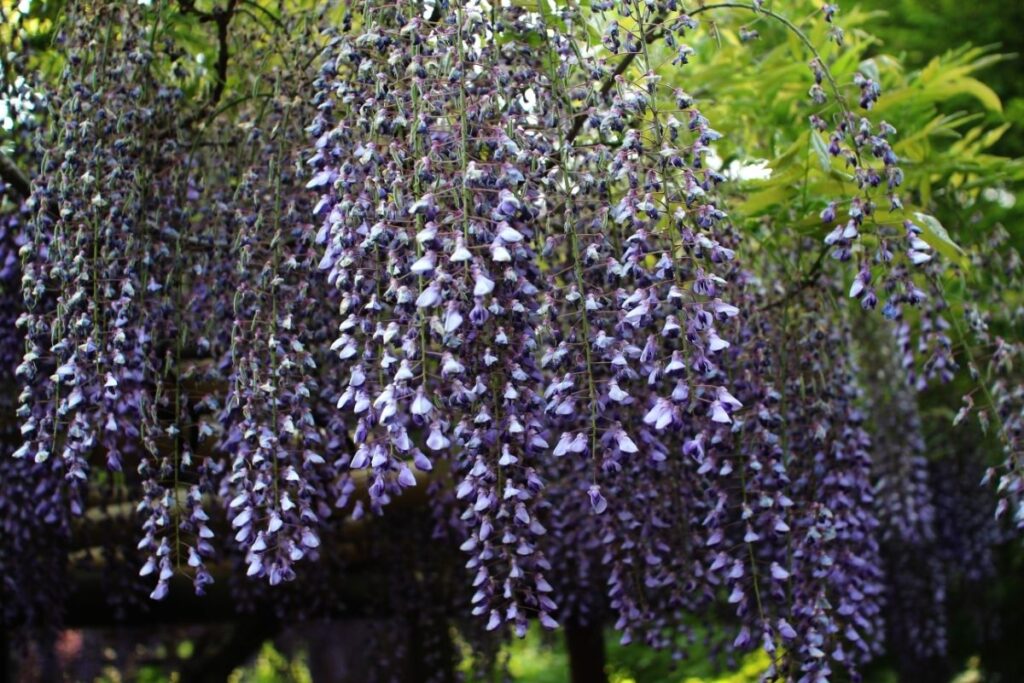
Forming a mind-blowing curtain of lush purple and blue flowers, the wisteria tree is a woody climbing tree seen in most parks across Japan.
Also known as the ‘Royal Purple’, the wisteria grows vigorously up to a height of 30 feet. A lot of gardeners like to grow this vining tree up the side of their house or along their fences, adding beautiful vibrancy and a sweet scent to their yard.
The foliage on this tree is equally attractive as its flowers. In the fall the dense foliage turns a golden-yellow color with pinnate leaves consisting of 11 to 20 lance-shaped leaflets.
4. Ginkgo Trees
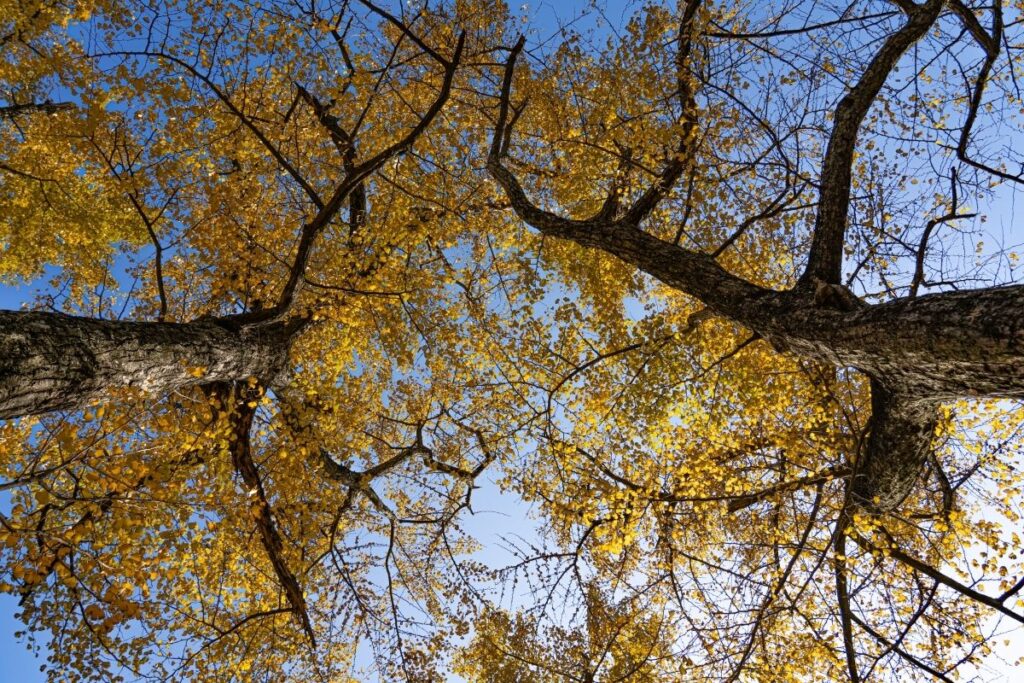
Lining the paths of most South Korean parks is the ginkgo tree. Strewn with glowing golden leaves, the ginkgo tree is fairly unique when it comes to trees native to Asia.
Unlike most native Asian trees, the ginkgo tree produces nutritious nuts that have a powerful and distinct odor.
Once seen as a useful ingredient in traditional Chinese medicine, the nuts, and leaves from the tree were used to treat brain and respiratory problems, as well as fever, diarrhea, or coughs.
5. Japanese Maple
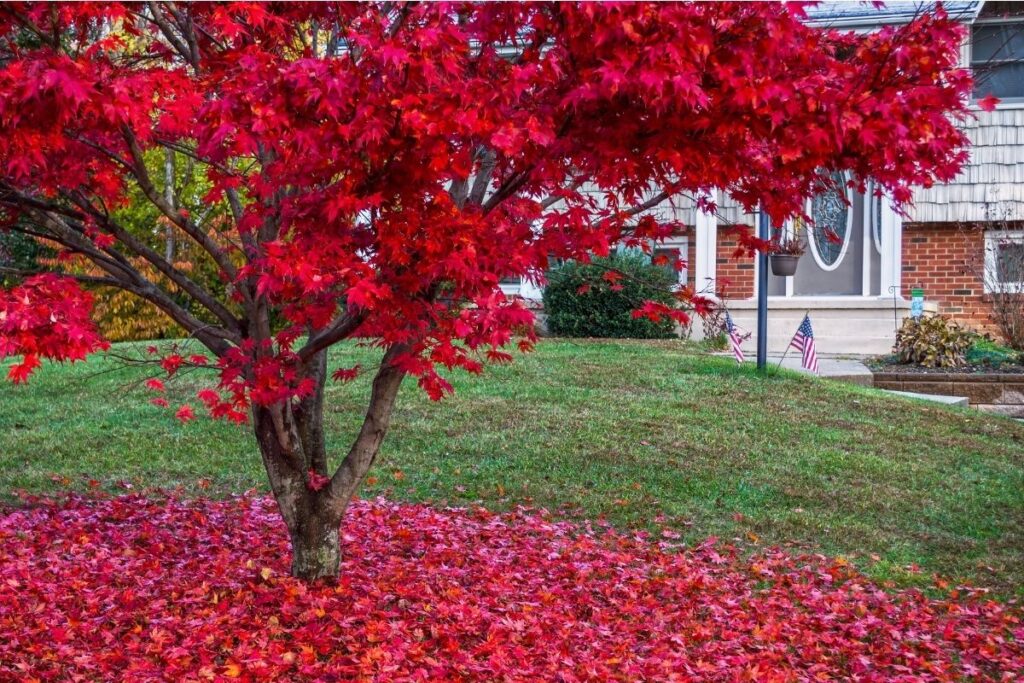
A large shrub or small deciduous tree, the Japanese maple typically grows from 15 to 25 feet tall. With a broadly spreading crown, this tree can be grown as a multi-stemmed shrub or a small single-stemmed tree.
The most impressive features of this tree are its dense clusters of purple-red flowers and deep red-purple foliage.
Thanks to their versatile nature in terms of shape and size, the Japanese maple tree is often used as a garden focal point.
RELATED: 9 Different Types Of Japanese Trees
6. Banyan Tree
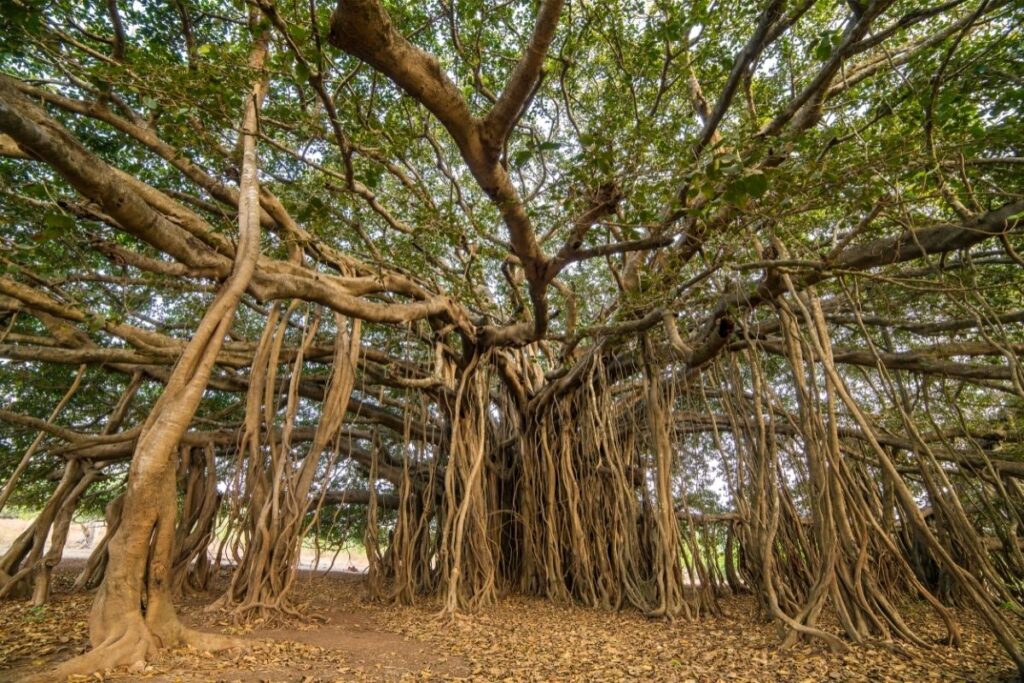
Commonly referred to as the Indian banyan or banyan fig, this wildly unique tree is part of the mulberry family and is native to the Indian subcontinent.
Unfortunately, due to its sheer size, the banyan tree isn’t one you’ll be growing at home. With a thick trunk and large branches to match, the banyan tree reaches heights of 30 feet, with its branches spreading laterally and indefinitely.
The leaves on the banyan tree are wide, long, and leathery. They have a glossy texture, green color, and are elliptical in shape.
7. Durian Fruit Tree
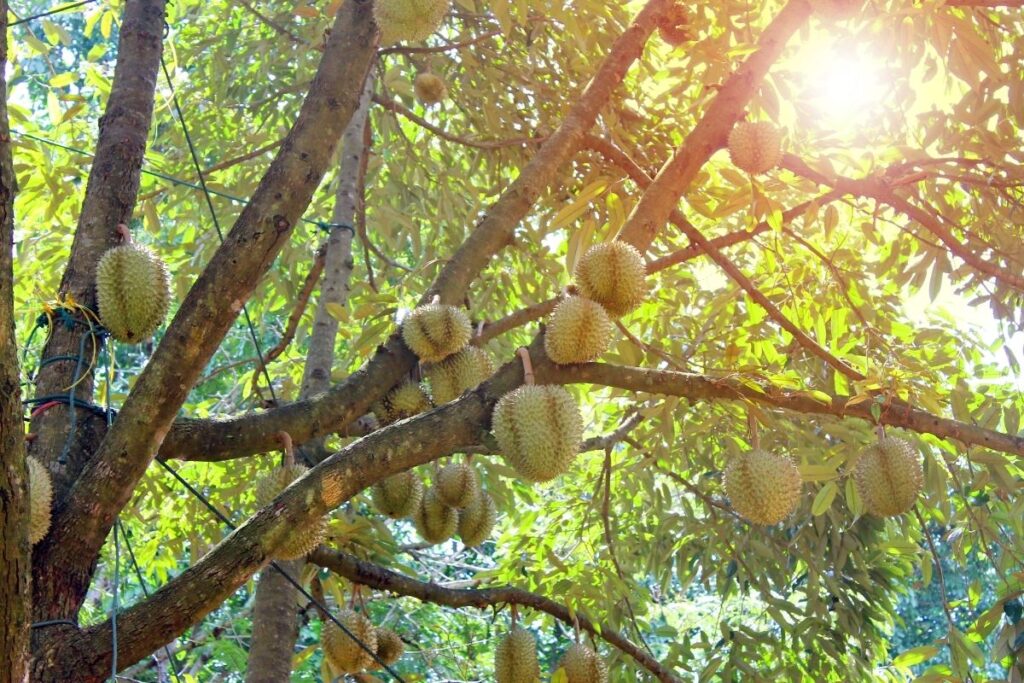
The next tree on our list produces one of the most loved and hated fruits found in Asia. This tropical evergreen tree produces the infamous durian fruit. Weighing up to four kilograms the durian fruit is football-shaped.
Its exterior is covered in large sharp spines. Once the tough exterior is removed, a bright yellow, soft flesh is found. People enjoy the fruit for its sweet and savory taste. However, a lot of people also despise the fruit due to its smell.
Known as the most foul-smelling fruit in the world, hotels and transport services around Asia ban the consumption of the fruit. The smell is often compared to that of raw sewage or rotting flesh.
8. Rainbow Eucalyptus
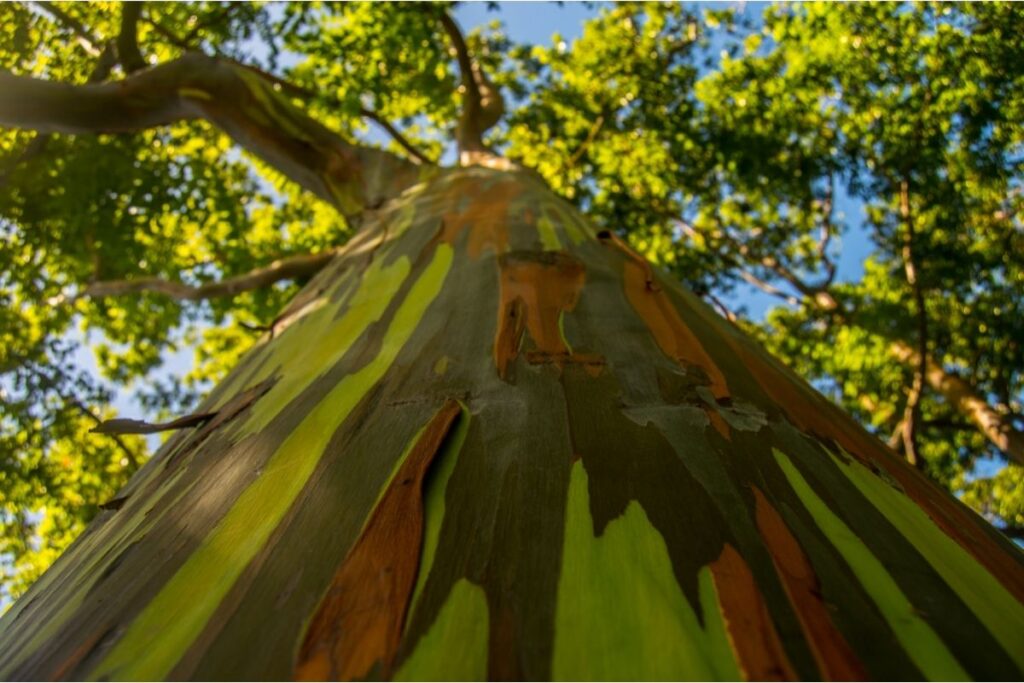
The rainbow eucalyptus, found in the Philippines, is one of nature’s many masterpieces. Also known as the Mindanao gum or rainbow gum tree, at first sight of the tree, you may get the impression someone has splashed it with multicolored paint.
This isn’t the case. Interestingly, this broad-leaved evergreen sheds its barks to reveal its vibrant colors. These colors range from yellow, orange, and green to blue, maroon, and purple.
9. Chinese Plum Blossom Trees
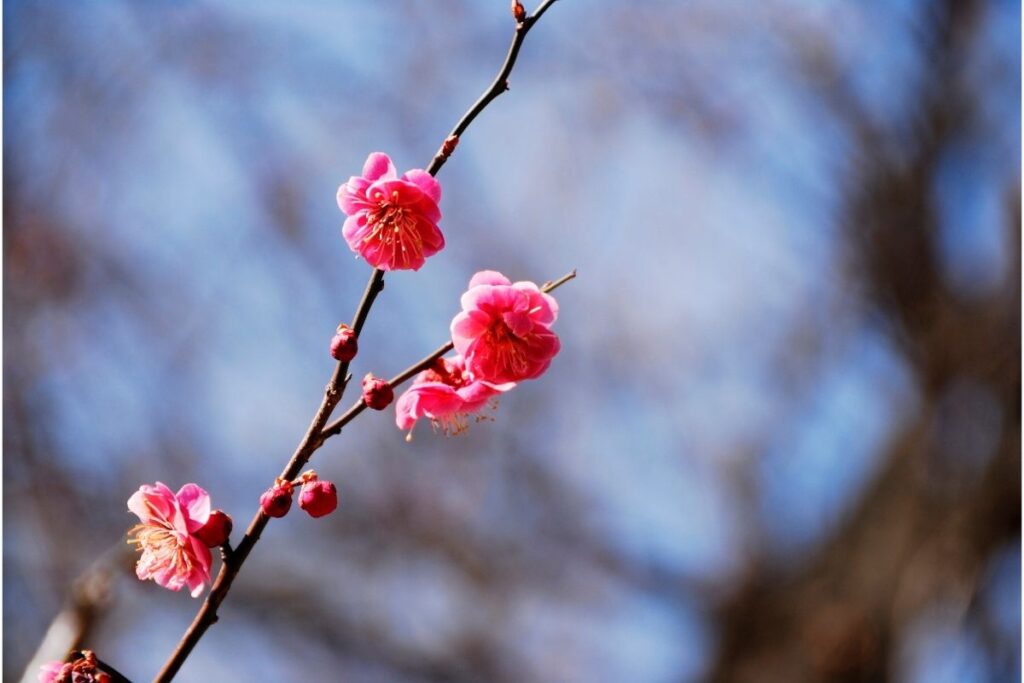
The Chinese winter plum tree might take a backseat to the more popular cherry blossom tree, but they are remarkable in their own way.
Standing up to 10 m tall, the Chinese plum blossom tree is loved for its impressive endurance and resilience.
During the harsh winter months, this tree doesn’t wither. The flowers on this tree tend to take on darker shades of yellow, pink, and red. With a delightful fragrant smell, you might smell this tree before you see it.
10. Narra Tree
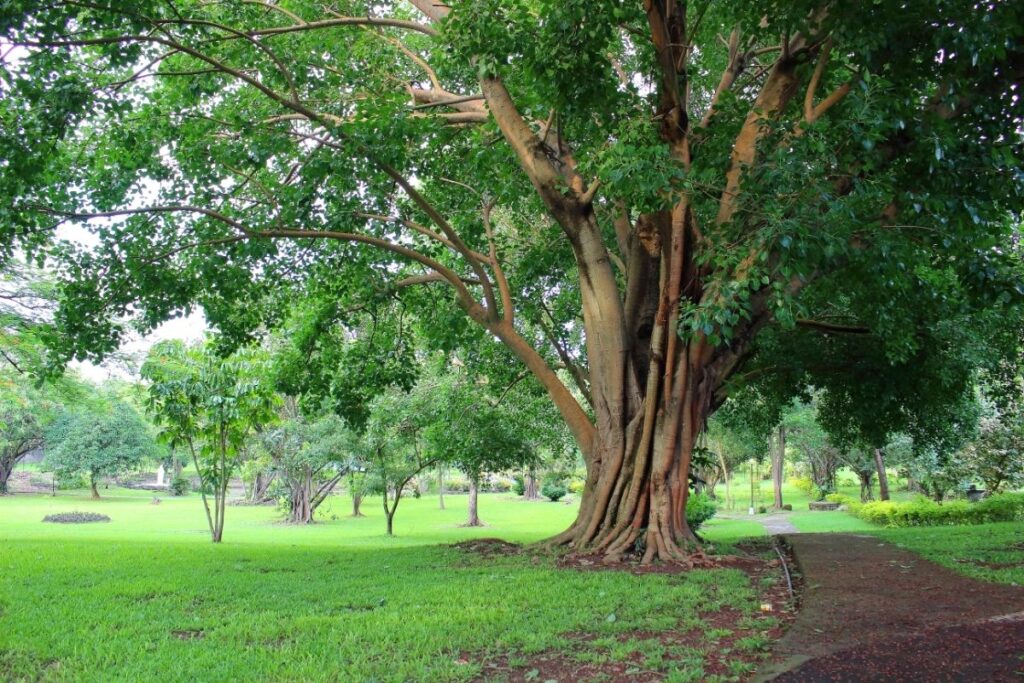
Native to the Philippines, the Narra tree is a strong and large deciduous tree with many purposes. The tree is frequently used as an ornamental piece and in medicine. It also happens to be the national tree of the Philippines.
Standing up to 35 m tall, the Narra tree produces delicate yellow flowers that can be seen scattered along pathways in Philippine parks and cities.
Sadly, the high demand for this tree’s rose-scented and extremely durable timber has forced the species into a vulnerable status.
11. Rhododendron Tree

The rhododendron flower is actually the national flower of Nepal. You can easily identify the rhododendron thanks to its bright red, magenta, and pink flowers that bloom with large clusters of fine petals.
Growing upwards of 20 m the Rhododendron tree thrives in areas of higher elevation. This is the reason it is so commonly seen in Nepal.
Aside from being Nepal’s national flower, the wood from the rhododendron tree is used for making spoons, bowls, and furniture.
12. The Rain Tree
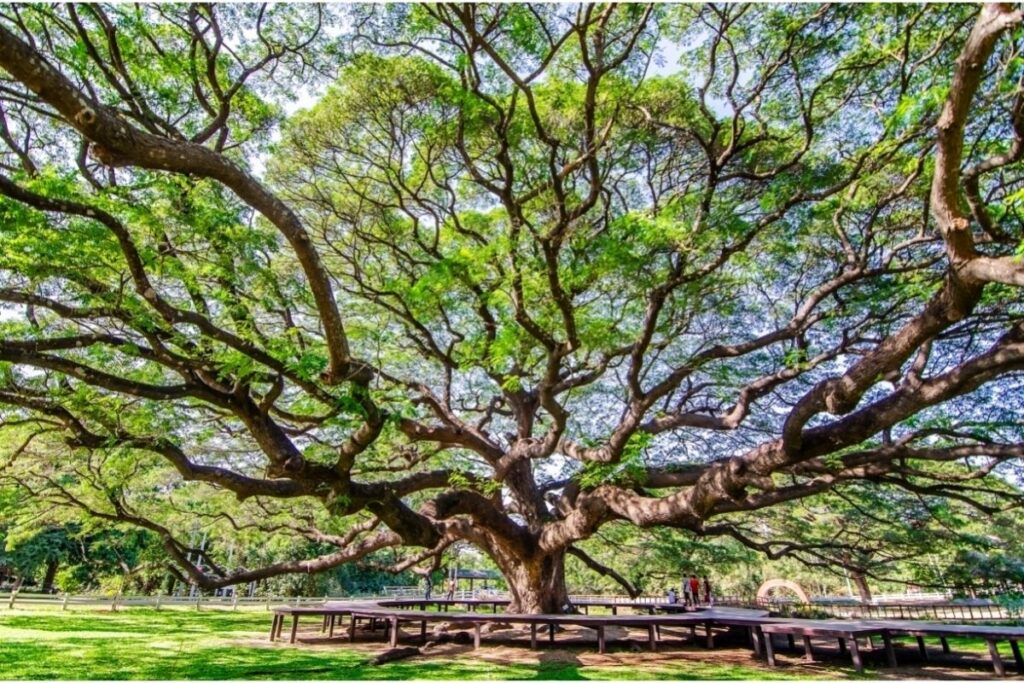
Reaching heights of 30 m and featuring an umbrella crown that can spread 20 to 30 m across, the rain tree is a common sight in Singapore and India.
This interesting tree has twice pinnate leaves, small clusters of pink-white flowers, and a tough dark brown bark. As the tree matures, the bark begins to soften and flake.
Due to the amazing shade the tree offers, it is typically planted in coffee plantations and along the roadsides, so people can escape the midday sun.
13. The Sacred Fig Tree
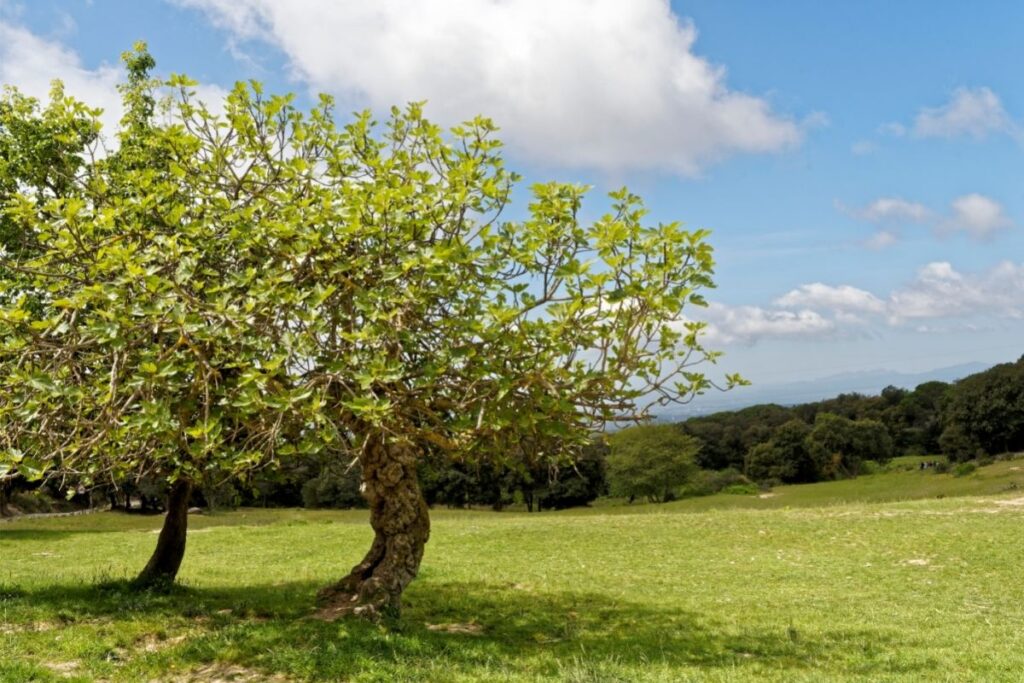
Known by the scientific name Ficus Religiosa, the sacred fig tree is a large epiphytic tree with great cultural and religious significance all over Asia, primarily in Thailand.
This is because it is believed that the Buddha attained enlightenment while sitting under the tree.
Despite its great significance, the tree is still used to treat disorders such as asthma, diarrhea, diabetes, epilepsy, and sexual disorders. In India, the tree is also cultivated for its fig fruit.
RELATED: Why Is My Fiddle Leaf Fig Limp? How To Save Your Droopy Plant
14. Sea Apple Tree
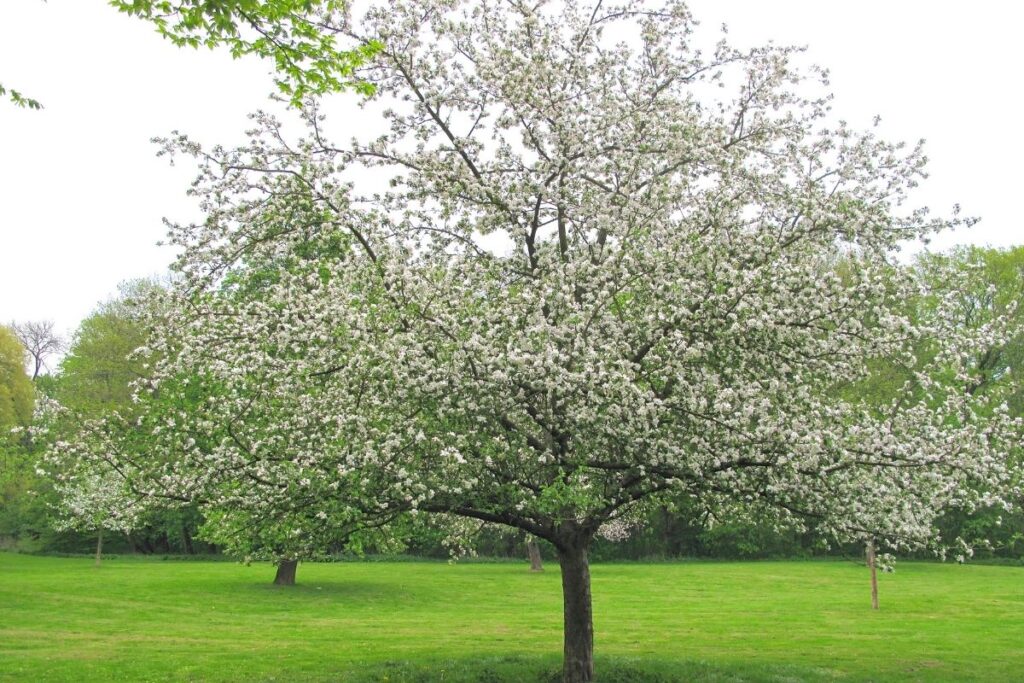
This is a large coastal tree found most commonly in Singapore. Reaching heights of 30 m, it is a durable, robust tree that blooms large bright white flowers.
These flowers emerge in compact clusters with showy stamens. From the tree grows green, oblong fruits with a leathery rind. These fruits are a favorite snack of the bat, which consumes a lot of the fruit, helping to disperse the seeds in the process.
15. The Fujian Tree
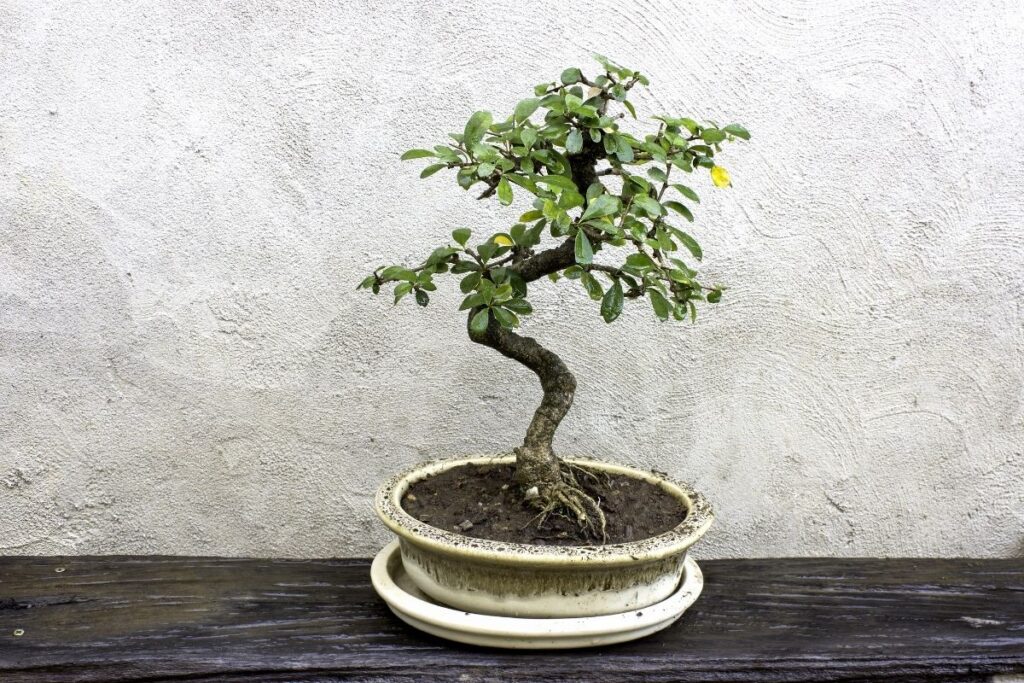
The Fujian tree, or as many call it, the Fukien tea tree is a tree indigenous to Southeast Asia. This tree is only small in size and has a bonsai-like appearance.
Due to its interesting and quite beautiful appearance, the tree is typically kept in the home as an ornamental piece. Throughout the year small white flowers bloom.
Eventually, blooms give way to tiny red, green, or blackberries similar to miniature rosehips. The tree is also loved for its deep dark green leaves.
16. Teak Tree
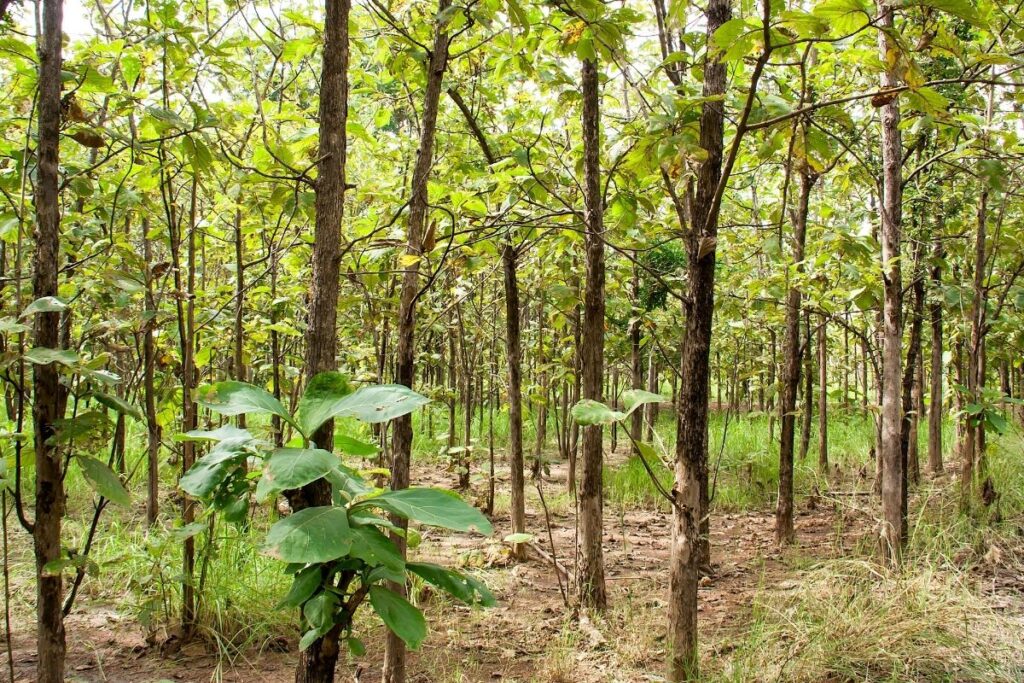
The final tree on our list is the teak tree. Also known by its Latin name Tectona, this deciduous tree easily grows up to 40 m tall.
Native to Thailand, the wood from this tree is so durable and reliable that it is usually harvested and used to make various types of furniture and boat decks. For the wood to be at its best, the teak tree has to have been growing for at least 40 years.
Having said that new technology looks like it may have made this possible after 10 years.
Final Thoughts
As you can see from our list, there is an incredible amount of versatility and variation when it comes to Asian trees.
While almost every tree on this list is primarily used to add color and decoration to parks and gardens, some Asian trees have more uses that are quite significant.
Some Asian trees have great cultural significance, while others have medical properties that help treat a wide range of illnesses. Some trees are used for their wood, while others are simply used for the delicious or smelly fruit they produce.
Hopefully, by making your way through our list you have developed a better understanding of the types of trees found in Asia as well as the important uses they may have.
If you’re lucky enough to find yourself in Asia in the near future, you should now be able to identify the beautiful trees from this list.







